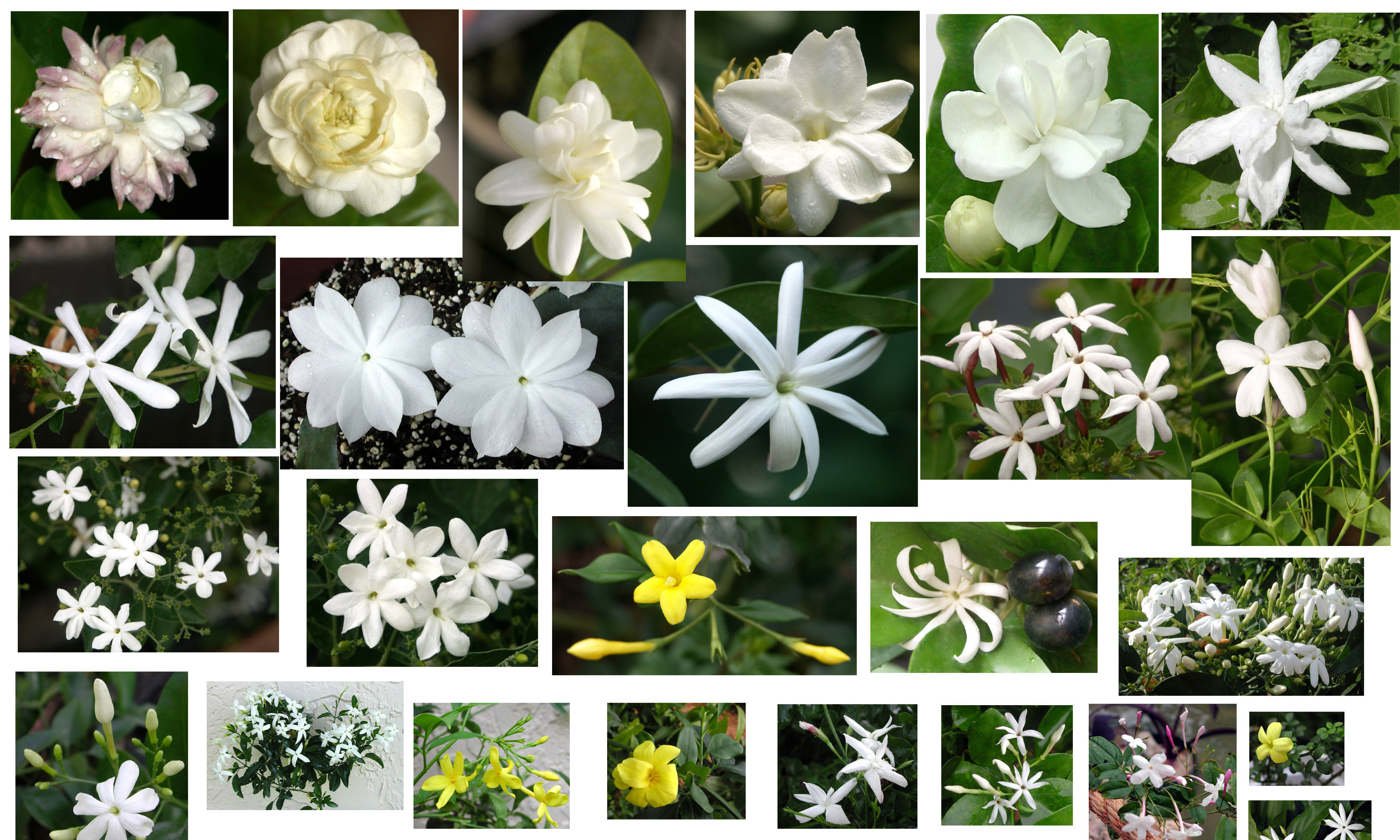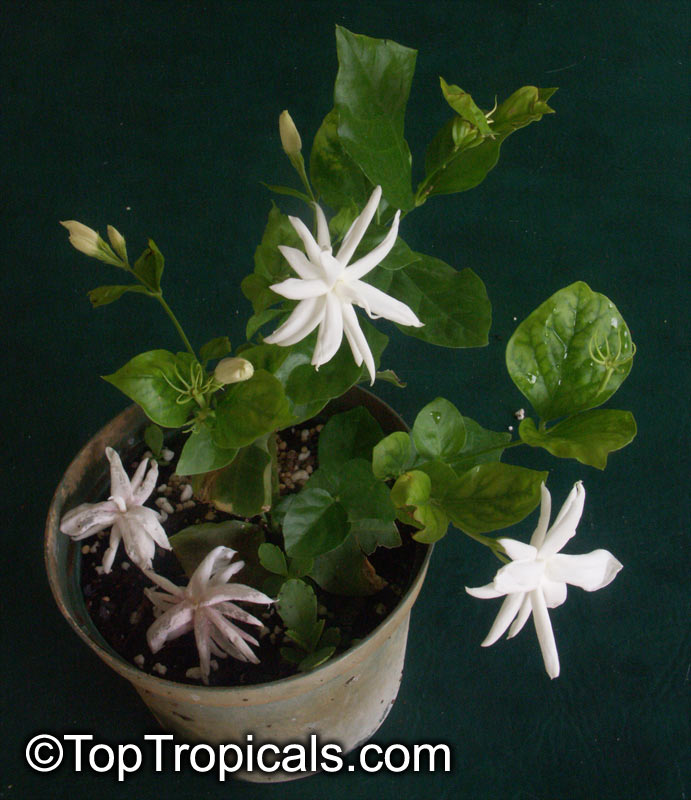Garden Blog - Top Tropicals
Have you seen a yellow jasmine?

Jasminum mesnyi, Japanese Jasmine, Primrose Jasmine.

Jasminum mesnyi, Japanese Jasmine, Primrose Jasmine.

Jasminum mesnyi, Japanese Jasmine, Primrose Jasmine.
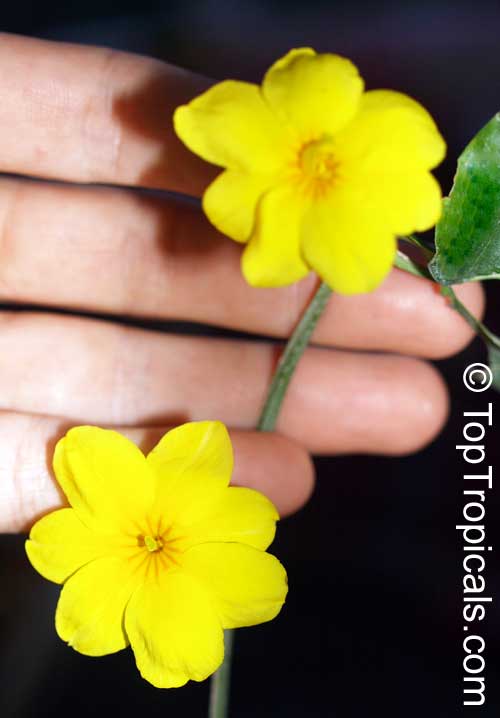
Jasminum mesnyi, Japanese Jasmine, Primrose Jasmine.
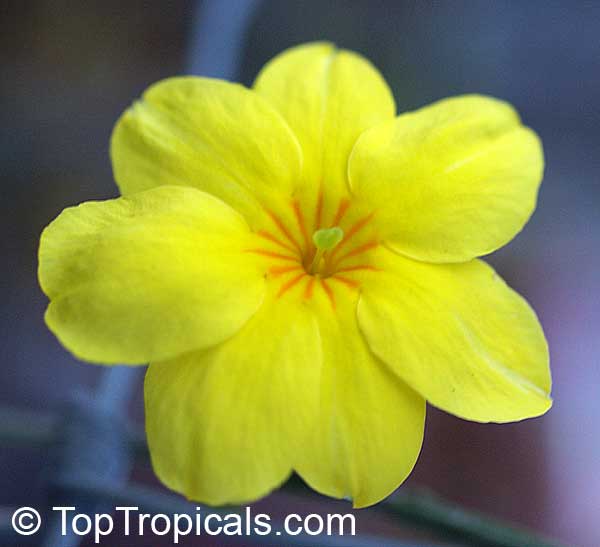
Jasminum mesnyi, Japanese Jasmine, Primrose Jasmine.
- 💟 One of the few jasmines with yellow flowers is Jasminum mesnyi, or Japanese Jasmine, also known as Primrose Jasmine.
- 💟 Rare and beautiful. This unusual jasmine features large, vibrant yellow flowers that stand out beautifully against its dark green foliage.
- 💟 Fast growing and vigorous. It's a valuable plant in landscaping for its fast growth, dense foliage, and ability to form a lush, bright cover.
- 💟 Easy to grow. Japanese Jasmine is incredibly versatile - it grows wonderfully in mass plantings, can be pruned to create a small hedge, or allowed to trail over fences and walls.
- 💟 Trim it more! The more you trim it, the bushier it becomes, forming a dense "cloud" of greenery with cheerful yellow flowers scattered throughout.
- 💟 Whether you're looking to add color, create a natural screen, or cover up an unsightly area, Japanese Jasmine is a fantastic choice that brings both beauty and utility to any garden!
👍 What other yellow jasmines do you know? Share in comments⬇️
🛒 Order Japanese Jasmine
#Hedges_with_benefits #Nature_Wonders
🔴 Join 👉 TopTropicals
What jasmine blooms year around?
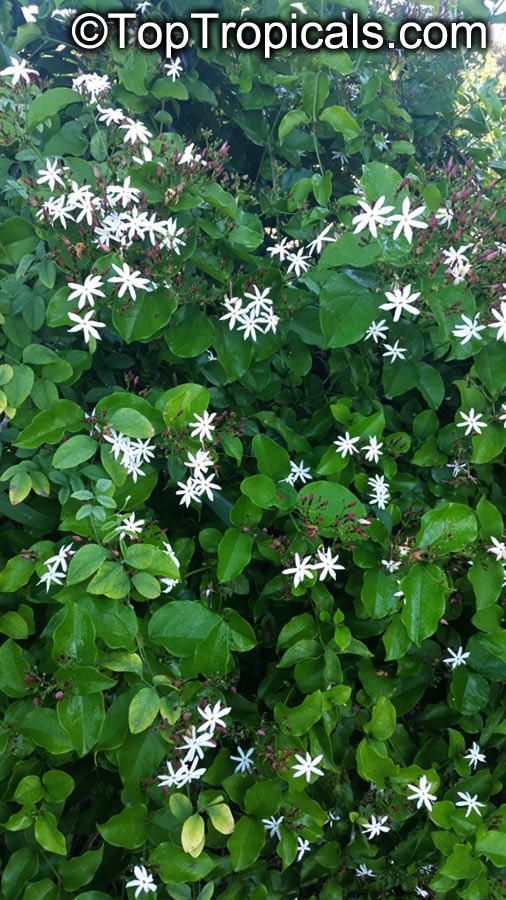
Jasminum dichotomum - Rose Bud Jasmine, Everblooming Jasmine

Jasminum dichotomum - Rose Bud Jasmine, Everblooming Jasmine
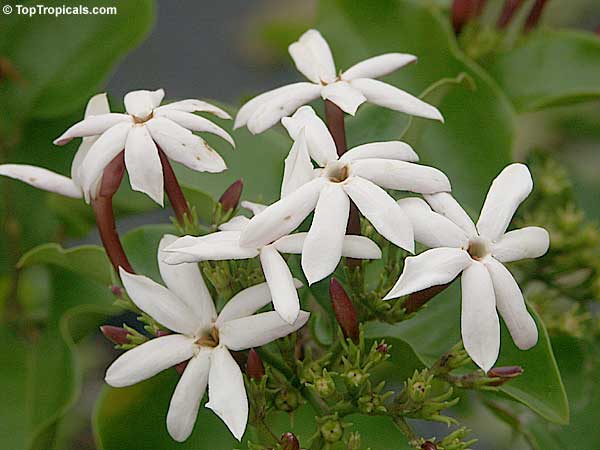
Jasminum dichotomum - Rose Bud Jasmine, Everblooming Jasmine
- ❤️ Jasminum dichotomum - Rose Bud Jasmine or Everblooming Jasmine, is rare and captivating. This unique jasmine is adored for its highly fragrant flowers that bloom year-round, filling the air with a sweet, floral scent.
- ❤️ Yes, it has Rose Buds! Its glossy green leaves add an elegant touch, beautifully contrasting with dark pink buds that open into pure white, star-shaped flowers.
- ❤️ Super fast growing! This vigorous grower isn't just a delight for the senses - it's also a powerhouse in the garden, capable of covering a fence, trellis, or pagoda in no time.
- ❤️ For those looking to add both fragrance and beauty to their landscape with minimal fuss, rose bud jasmine is a spectacular choice that's sure to impress!
👍 What is your favorite jasmine? Share in comments⬇️
🛒 Plant Rose Bud Jasmine
#Perfume_Plants #Hedges_with_benefits
🔴 Join 👉 TopTropicals
Date:
Selecting the right jasmine
Q: Would you please help me select the right jasmine? I want to find a jasmine that smells like lily of the valley or honeysuckle or roses, not the one that smells like gardenia. I'm in Missouri, zone 6, so I want a jasmine for my deck for the summer, so I want it to bloom this season.
A: There are 3 major types of tropical flower fragrances - Sweet, Fresh, and Fruity (including Lemony). Below are the most interesting fragrant tropical flowers, excluding Gardenias (which are sweet type). These are all same-year bloomers, so you can enjoy the fragrance this year assuming proper care and bloom booster feeding.
* - The fastest growers that can be treated as annuals. Others can be grown in a pot and brought inside for winter, and be enjoyed every year.
Sweet
*
Aloysia virgata - Almond Bush
*
Cestrum diurnum - White Chocolate Jasmine, Day Blooming Jasmine
*
Cestrum nocturnum - Night blooming jasmine
*
Heliotropium peruviana - Turnsole, Cherry Pie
Portlandia Cubanola domingensis - Cubanola (Warm white Chocolate)
Portlandia grandiflora - Glorious Flower of Cuba (Warm white Chocolate)
Fresh
Beaumontia grandiflora - Easter Lily Vine
*
Brugmansia Jean Pasco - Yellow Angels Trumpet
*
Brugmansia Variegated Orange Angel Trumpet
*
Brunfelsia americana - Lady of the night
*
Brunfelsia lactea - Lady of the night
*
Brunfelsia nitida - Lady of the night
Crinum Queen Emma - Spider lily
*
Eucharis grandiflora - Amazon Lily
*
Hedychium coronarium - Butterfly Ginger
Hiptage benghalensis - Helicopter Flower
Hoya odorata - Fragrant Hoya
Ixora hybrid Sea Green
Ixora odorata - Fragrant Ixora
*
Jasminum azoricum - River Jasmine
*
Jasminum Molle - Indian Jui
Jasminum nitidum - Star Jasmine
*
Jasminum officinale Flore Pleno - French Perfume Jasmine
*
Jasminum polyanthum - Pink Winter Jasmine
*
Jasminum sambac Belle of India
*
Jasminum sambac Grand Duke
*
Jasminum sambac Maid of Orleans
*
Polianthes tuberosa - Tuberose
*Sclerochiton harveyanus - Blue Lips, Mazabuka (Lavender-violet-like)
Fruity
Aglaia odorata - Chinese Perfume Plant (Lemony)
Artabotrys siamensis - Climbing Ylang-Ylang (Lemony)
Cananga fruticosa - Dwarf Ylang-Ylang
Carissa grandiflora - Natal Plum
Cerbera x manghas hybrid - Enchanted Incense
*
Jasminum dichotomum - Rose Bud Jasmine
*
Lonicera japonica - Japanese Honeysuckle
Magnolia figo - Banana Magnolia (Banana-like)
Magnolia x Alba grafted (Bubble-gum-like)
*
Mirabilis jalapa - Four oclock plant
Oxyceros horridus, Randia siamensis
*
Quisqualis - Rangoon Creeper
*
Radermachera Kunming - Dwarf Tree Jasmine
*
Stephanotis floribunda - Bridal Bouquet
Strophanthus gratus - Climbing Oleander
Telosoma cordata - Pakalana vine (Lemony)
Fertilizers for profuse flowering:
Pink N Good Daily Plant Food - Flower Booster
Tropical Allure - Smart-Release Booster
SUNSHINE-Superfood micro-elements
Date:
True love of Night Blooming Jasmine
By Onika Amell, tropical plant specialist
Q: I live in New Cumberland, West Virginia. I love the smell of Night-Blooming jasmine. Is it possible to grow it in the northern panhandle of West Virginia? Do I have to plant it every year or do I keep it in a pot and take it inside during the winter months?
A: Technically, Night Blooming Jasmine is not a true jasmine
(those plants belong to Oleaceae, or Olive family). Night Blooming Jasmine
belongs to the Solanaceae family, also known as the Nightshade or "Potato" family
of plants. Yes, this sweet fragrant flower called Jasmine for its perfume is
related to potatoes and tomatoes!
Night Blooming Jasmine - Cestrum nocturnum - is loved by many gardeners for its beautiful
fragrance at night. It is one of the most fragrant tropical evergreen shrubs
available. Cascading clusters of tiny, tubular pale yellow to white flowers open at
night and release a heavenly fragrance throughout the garden, especially on
warm summer evenings. The fragrance is much lighter during the day.
Night Blooming Jasmine is grown year-round in zones 9-11. It is at its
happiest in a sunny to a partially sunny spot in your garden in well-drained soil
but can be grown in cooler climates as a container or greenhouse plant.
You would absolutely be able to enjoy this plant during the warm months
in West Virginia, but it will most certainly not survive outside during the
winter. You will have to bring it inside. Take it outside again only once you
are confident there is no more possibility of frost. When grown indoors, be
sure to give it the sunniest, South facing window in your home. When grown in
a container, you will need to re-pot it every two to three years so it
doesn't become root-bound.
For those who are lucky to live in frost-free areas, in ideal growing
conditions outside, it can easily reach 8 feet with a spread of 5 feet. It has
a lovely informal look that can soften a more manicured garden. Add organic
matter to the planting hole when you plant to enrich the soil around the root
ball. Water well in the summer, but allow them to dry out a bit between
watering in the winter. Plant this Jasmine near pools, porches, doors, windows,
and walkways where its lovely fragrance can be enjoyed. The shrub is also an
excellent plant for privacy hedges and screens. When grown as a hedge, plant 3
feet apart.
Trim lightly after a bloom cycle to shape and then do a hard pruning in
fall or spring to control the size of this plant. Fertilize 3 times a year -
in spring, summer, and autumn - with a good quality granular fertilizer.
Recommended fertilizers:
Pink N Good Daily Plant Food - Flower Booster
Tropical Allure - Smart-Release Booster
Interesting facts:
Night-blooming jasmine is an excellent mosquito repellent. The powerful
scent of the flowers attracts moths and bats that feed on mosquitoes and
other small insects.
The flowers of the Night Blooming jasmine are widely used in India and
other countries of South Asia for perfumery, medicinal applications and in
religious ceremonies.
Limited time special offer:
Instant $5 off Night Blooming Jasmine
What is the Jasmine Oil made of?
French Perfume Jasmine, Poets jasmine (Jasminum officinale)
- 🌞 French Perfume Jasmine, or Poets jasmine (Jasminum officinale) is the most popular jasmine in the world as it is the source of the original Jasmine essential oil.
- 🌞 There are two varieties - with single flower (Jasminum x grandiflorum - it has larger size flower and is more rare) and double flower ( Jasminum officinale Flore Pleno). They are very hard to tell apart when not in bloom as the leaves look the same, but the flowers differ (see video).
- 🌞 Essential oil of this jasmine is one of the most important components in perfumery.
- 🌞 Grown in the perfume fields of Southern France.
- 🌞 Semi-evergreen to deciduous vine with lots of fragrant white flowers in spring, summer, and fall.
- 🌞 Drought tolerant and hardy, it has good tolerance to a wide range of temperatures and is easily maintained in pots.
- 🌞 Jasmine associates nicely with climbing roses, honeysuckle or clematis, but it looks superb grown on its own.
🎥 The difference between the double and single flower varieties.
🛒 Shop French Perfume Jasmine
#Hedges_with_benefits #Perfume_Plants
🔴 Join 👉 TopTropicals
Date:
How to get a Jasmine to bloom.
Caring for jasmines as container plants during Winter
Locate the jasmine plant where it will receive bright filtered light at least six hours every day.
Put a few pebbles in a shallow plate or tray and pour fresh water over the pebbles. Set the pot on the pebbles, but don't let the water level touch the bottom of the pot. This increases the humidity in the air around the jasmine. Keep the plant away from wood stoves, heat vents and radiators.
Water the jasmine when the top 1/2 inch of the soil feels dry. Don't let the soil get soggy, and never let the pot sit in water. Water the plant sparingly during the winter.
Feed jasmine twice a month between Spring and early Fall, using a granulated slow-release, or water-soluble houseplant fertilizer mixed at half strength. Don't fertilize during the winter months.
Prune the jasmine as needed to maintain the desired shape. Never prune in winter, as the plant will be preparing to bud.
Encourage the jasmine to bloom by putting it in a cool room at night for four to five weeks during Fall to Early Winter. The plant should get plenty of sunlight during the day, but during the night, move it to a pitch-dark room where the temperature is between 40 and 50 degrees F. After four to five weeks, leave the plant in its regular, daytime location. The plant should start blooming in mid-Winter to early Spring.
See all jasmine plants...
What is a good plant for a fragrant elegant hedge? Discover the Angel Hair Jasmine
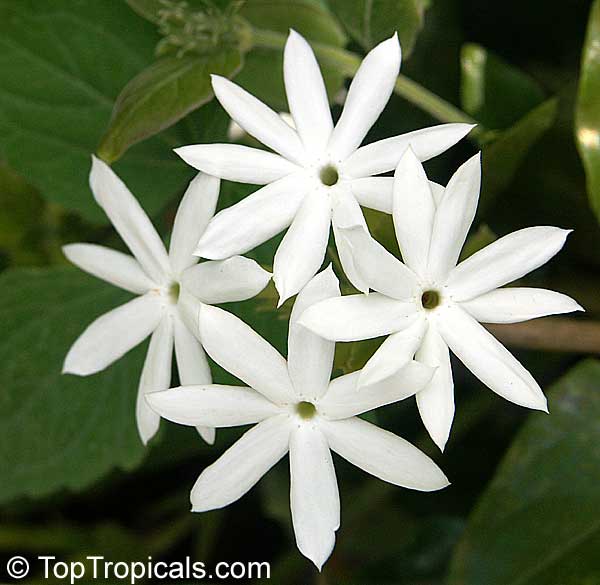
Jasminum pubescens (multiflorum) - Angel Hair Jasmine
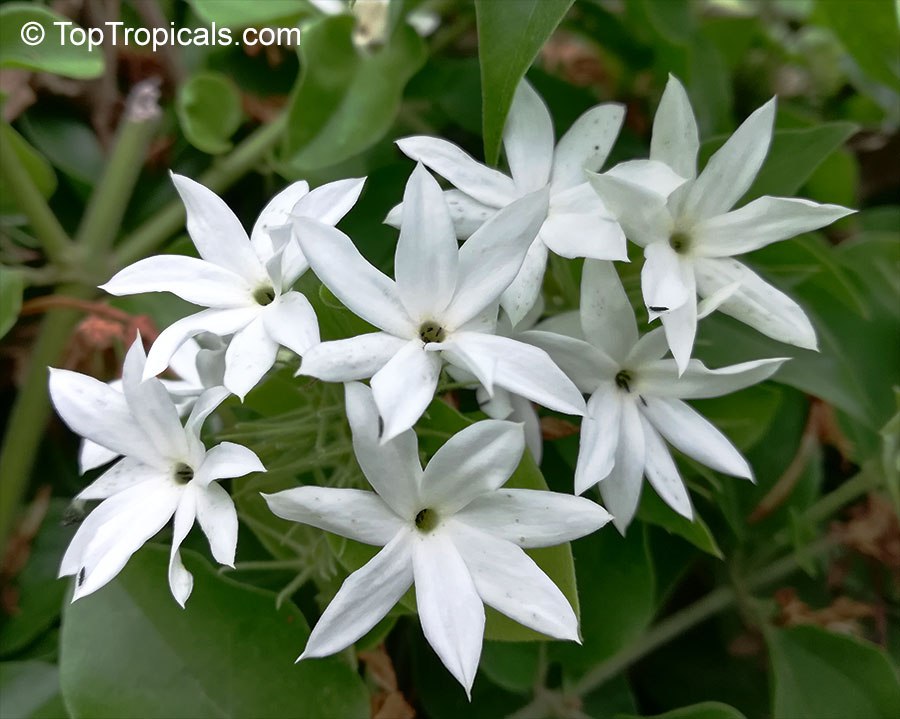
Jasminum pubescens (multiflorum) - Angel Hair Jasmine
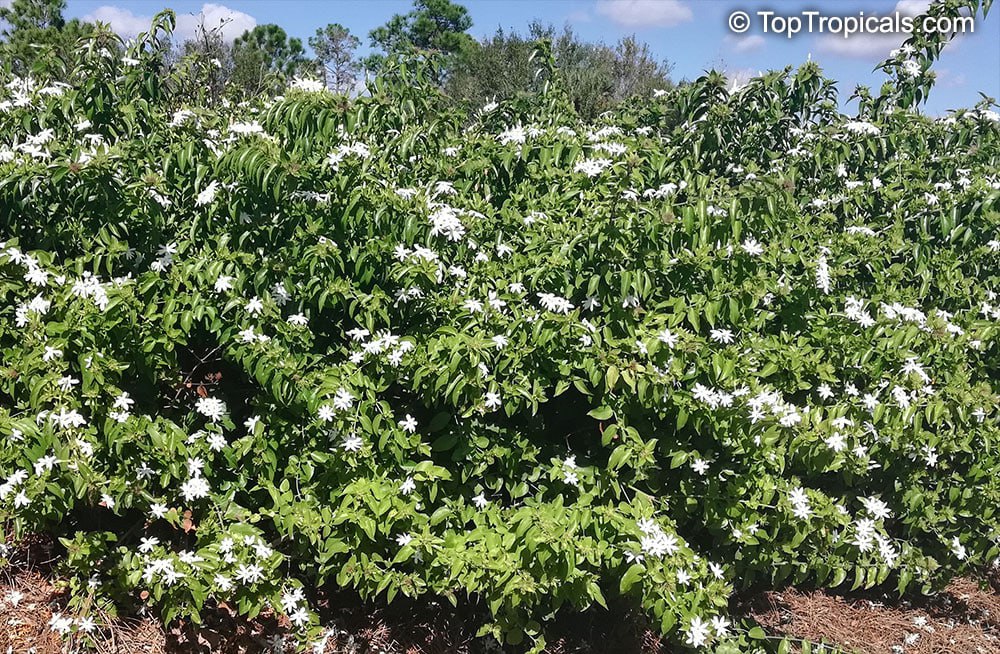
Jasminum pubescens (multiflorum) - Angel Hair Jasmine

Jasminum pubescens (multiflorum) - Angel Hair Jasmine
- 💮 Jasminum pubescens (multiflorum), also known as Angel Hair Jasmine, is a beloved choice for landscapes, prized for its multitude of exceptional qualities.
- 💮 Bushy, dense vining shrub with star-like white flowers emitting a delightful fragrance.
- 💮 Soft, velvet-like leaves add to its charm.
- 💮 Rapid growth makes it ideal for creating lush hedges or adding vertical interest to garden spaces.
- 💮 Perfect for hedges, fences, or trellises, adding a touch of beauty and fragrance to any outdoor setting.
🛒 Make a fragrant hedge with Angel Hair Jasmine
#Hedges_with_benefits #Perfume_Plants
🏵 TopTropicals
Yet another fragrant Jasmine hedge!
Jasminum volubile - Wax Jasmine
- ☀️ Jasminum volubile - Wax Jasmine is one more excellent choice of fragrant Jasmine bush for your landscaping needs, besides Angel Hair Jasmine we mentioned earlier.
- ☀️ Lovely blooms: Fragrant, pinwheel-shaped white flowers from April to September.
- ☀️ Versatile growth: Quick-growing vine for trellises, ground covers, or containers.
- ☀️ Foliage: Glossy, dark green leaves add a lush touch.
- ☀️ Perfect Hedge: Works beautifully as a hedge plant.
🛒 Order Wax Jasmine
#Hedges_with_benefits #Perfume_Plants
🔴 Join 👉 TopTropicals
What is it, Jasmine, Carnation, or Gardenia?

Tabernaemontana Flore Pleno - Crape Jasmine, Carnation of India, Florida Gardenia
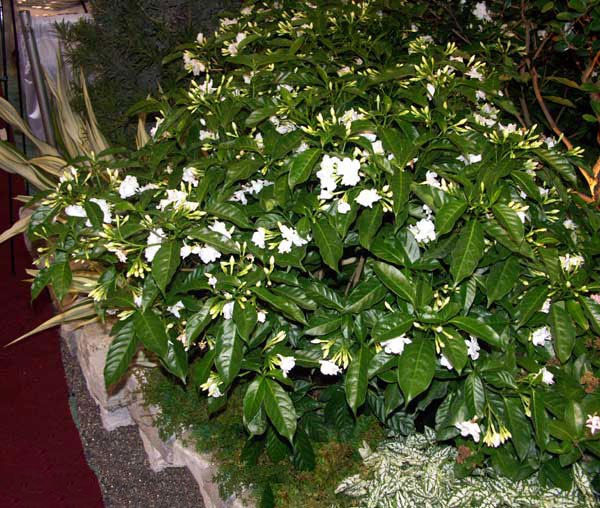
Tabernaemontana Flore Pleno - Crape Jasmine, Carnation of India, Florida Gardenia
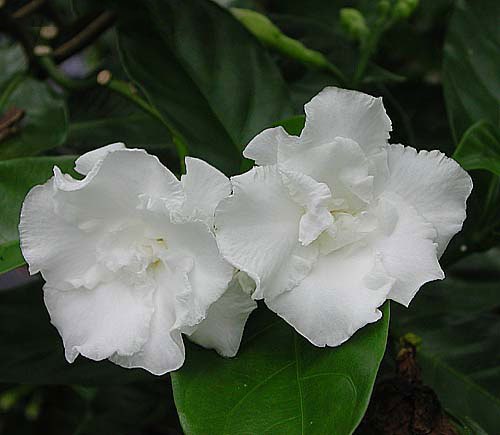
Tabernaemontana Flore Pleno - Crape Jasmine, Carnation of India, Florida Gardenia
💮 Tabernaemontana Flore Pleno is also called Crape Jasmine, Carnation of India, or Florida Gardenia. Although it is not related to Jasmine, Carnation, or Gardenia! It is in fact in the same family with Plumeria and Desert Roses!
This lovely bush or small tree with waxy leaves and beautiful fragrant flowers is a must in every tropical garden. Because:
- 💠 it is easy to grow and undemanding
- 💠 it is very fast growing and bushy
- 💠 it is free flowering throughout the year
🛒 Get one for your garden
#Perfume_Plants #Hedges_with_benefits
Date:
Secrets of flowering of Jasmine Sambac
Q: Q: My Jasmine sambac Maid of Orleans is growing very fast and produced lots of branches and dark green leaves, when will I see flowers? I only saw 2 or 3 flowers since since Spring. I is planted by East wall of the house. Should I use some special fertilizer perhaps?
A: Jasmine sambac is a tropical bush or vine that enjoys hot summers. Since it
tolerates wide range of light conditions, it can be grown both in shade or sun; this is why it is highly recommended for indoor
culture where light level is limited. Remember though that profuse blooming directly depends on the light level. Your Eastern
exposure location may not be providing enough light for the flowering. Dark green leaves are also a sign of a filtered light
sitution. Extra fertilizing may not help to induce flowering if the light is low, although it is always beneficial for a plant
(it may just start producing even more leaves and branches). The ideal conditions for Sambac's flowering are - full sun all
day long, high temperatures (upper 80's-90's, even over 100F is fine), and very good drainage. Some gardeners call Jasmine
sambac "almost a succulent", referring to its low watering needs. To be exact, this plant requires regular watering, but will
produce lots of flowers only providing perfect drainage. You may never see flowers if the plant has wet feet or water-logging
occurs. If your summers are rainy (like in Florida), make sure your jasmine is planted with at least 4-5" elevation and not in a
low/wet spot.
See Top Tropicals Video about jasmine Sambac:
- varieties, history and use.
